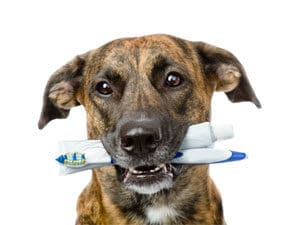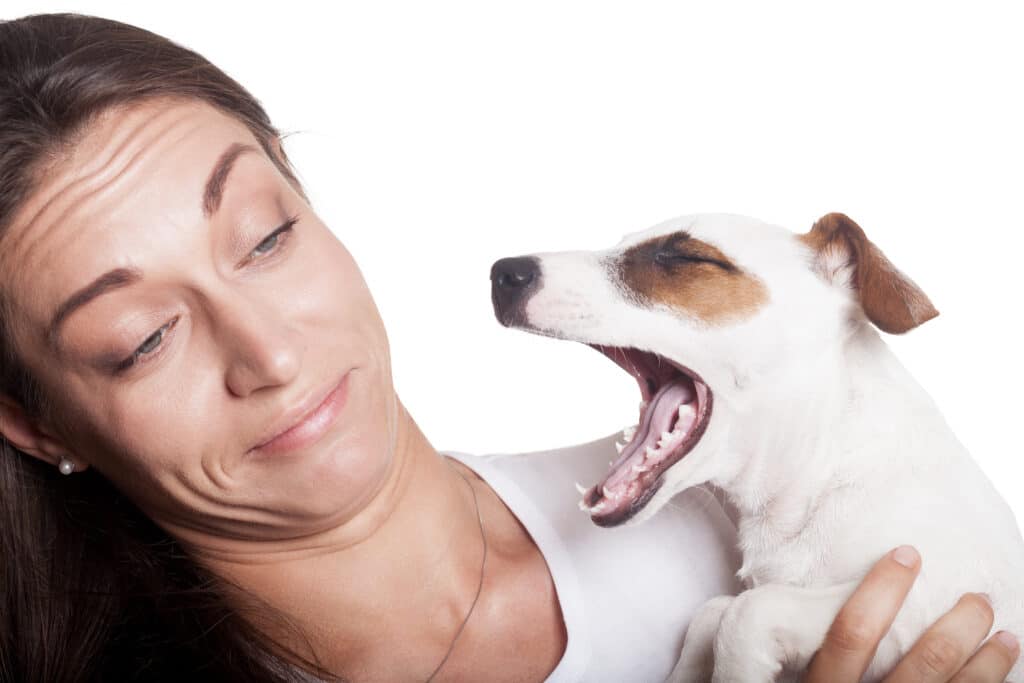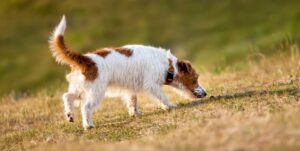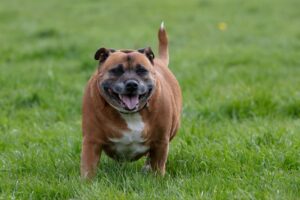
There are many reasons why good dogs sometimes behave badly. You’ve seen many cases on Cesar Millan’s TV shows where bad behaviors in dogs were caused or trigged by human behavior.
Cesar has dealt with a lot of these cases, including severe aggression, fear, and dominance issues. But what you might not know is that bad behavior, or a sudden change in your dog’s behavior, can be caused by undetected medical problems. For example, if your dog starts chewing on random household objects, he may be experiencing tooth pain that could be helped with regular brushing.
Symptoms to watch for
If your dog suddenly becomes a compulsive chewer, there is a chance that something is wrong with her teeth or gums. The most frequent medical problem dogs have is dental disease, and it usually goes undetected. You should watch for the following symptoms:
- Bad breath
- Red or swollen gums
- Bleeding gums
- Sudden change in eating or chewing habits
- Pawing at the face or mouth
- Compulsive nose licking
Please consult your veterinarian if you see any these symptoms.
Prevention
Cesar prefers prevention over treatment and believes that, “The daily practice of good oral health can prevent problems down the road.”
Dental disease will develop if plaque is present and remains over time. Tooth brushing is the single most effective way to prevent dental disease. Dental treats and chewing aids may also help reduce plaque buildup, but they should be used as a complement, not a replacement, for the toothbrush.
Dental care routine
Dr. Rick Garcia, who is the veterinarian at Cesar Millan’s Dog Psychology Center, shares his tips for a good and stress-free dental care program with seven simple rules sure to provide your pooch with a good dental care routine:
- A brushing routine is important for dogs of all ages. It’s ideal when introduced during puppyhood.
- Establish brushing as part of a daily routine with your dog. Try to brush at the same time every day.
- The best time for brushing is after walking and feeding but right before bed, when your dog may be most relaxed.
- Inspect your dog’s mouth before brushing. Make sure the gums are pink and not bleeding, and look for broken or chipped teeth. If you spot any of these signs, take your dog to the vet for a checkup.
- Introduce the taste of toothpaste to your dog before you brush. The best way to do this is by applying a small amount of toothpaste to your index finger and allowing your dog to smell and taste it.
- At the Dog Psychology Center, Dr. Garcia uses a toothpaste designed for dog, with a dog-friendly flavor.
- After your dog has sniffed the toothpaste and is used to its taste, apply more toothpaste to your index finger and carefully touch the gums, so your dog gets used to the feeling. Then, gently rub the toothpaste along the gum line.
- Let your dog rinse at the water bowl when you’r through.
Remember, do not attempt to wipe all of the teeth in the first or second brushing. Dr. Garcia recommends increasing the number of teeth you wipe each day as the routine becomes more familiar
How to introduce the toothbrush to your dog
After you have introduced cleaning and toothpaste to your dog, it’s time to introduce the toothbrush.
Make sure your dog is calm and submissive. Cesar warns to never attempt this with an excited dog. “Tooth brushing can be a form of affection for your dog. Never let it be stressful. Just be patient.”
Here is a step-by-step approach to help you add the toothbrush to your dog’s dental care routine:
Step 1: Apply a small amount of toothpaste to the toothbrush.
Step 2: Let the dog lick it off.
Step 3: Start by brushing one tooth with a gentle back and forth motion.
Step 4: Gradually increase the number of teeth brushed by one tooth per day.
If you have any questions or encounter problems with this dental brushing routine, consult your local vet. Good dental care is important and it is often overlooked. Cesar Millan is emphatic in saying that a dog’s strongest sense is smell. Dental disease can adversely affect a dog’s sense of smell, which can lead to behavior problems, fatigue, and overall unhappiness. .











